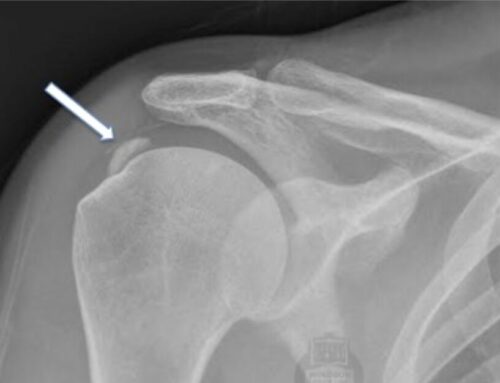True or false? Back pain is caused by lifting. This is just one of the myths that surrounds back pain.
According to a 2017-18 report by the Australian Institute of Health and Welfare four million Australians (16% of the population) had back problems within the year of the report, that’s 1 in 6 Australians! They also stated that it’s estimated 70-90% of people will suffer from lower back pain in some form at some point in their lives. So with this high prevalence of low back pain there are many fears and a lot of misinformation surrounding this ubiquitous condition.
 Myth 1: Lifting is bad for your back
Myth 1: Lifting is bad for your back
One of these is that lifting is bad for your back. How many times have you heard someone say “be careful” or “lift with your knees” when someone is about to lift something? There is this instant fear that we associate with low back injury or pain when lifting, like our spine is about to explode if we aren’t cautious or use the right technique when lifting.
But contrary to this belief, our spines are resilient, strong and can handle these movements. In fact, they were designed to perform them and can adapt to get stronger.
It is important to therefore address these beliefs in order to avoid fearing movement and not performing them, which as a result can cause de-conditioning and vulnerability to injury or pain. Like any other movement, if we haven’t trained it or if we avoid it, we can’t expect to be strong or confident in it.
Myth 2: Back pain is a serious medical condition
Most cases of low back pain are not related to serious or life threatening medical conditions. Although episodes of low back pain can be painful, scary and at times disabling, it’s important to be aware that it’s rarely life-threatening and will most likely improve.
Myth 3: Back pain will last forever and only get worse as we get older
Most episodes of acute low back pain improve within 6 weeks and do not mean that you will be riddled with back pain for the rest of your life. Like most structures in our body, it has the ability to heal and adapt. This also leads into the next point that just because we get older, it doesn’t necessarily mean that we will get back pain or that it will worsen. More and more research has shown that ageing isn’t a cause of low back pain. If this was the case, every single person would experience pain as they get older. It just doesn’t happen. Yes, we get some aches and pains but that is normal. By actually staying active and keeping an exercise routine as we age, rather than decreasing our activity levels we are less likely to experience pain in our older years.
As I’ll state throughout this blog pain is multifactorial, meaning there are multiple factors that contribute to pain. Therefore it’s important to address some of these factors which include diet, sleep, mental health, social interaction, life/job satisfaction as well as exercise.
 Myth 4: Your back pain has been around forever so there must be something damaged
Myth 4: Your back pain has been around forever so there must be something damaged
Put simply, pain does not always equal tissue damage. Yes, you can still have an injury where there is acute tissue damage but healing occurs usually within three months. Our backs are strong and resilient, they will heal and adapt.
So why do we get pain past these time frames when these tissues are supposed to have healed? Usually there are multiple factors that contribute to this. Things like stress, anxiety, fatigue, reduced activity, unaccustomed loads that we are either not ready for or have not done regularly over time can cause the back to become sensitive to movement. This can explain why we experience pain when there’s no obvious injury or with everyday movements. Think of a cup and these factors are filling the cup up and once it reaches the top it overflows and we experience pain.
 Myth 5: Scans are always needed for back pain
Myth 5: Scans are always needed for back pain
Scans for low back pain should be used primarily to detect serious pathology, which as we discussed earlier are rare. Scans, particularly MRIs, tend to be hyper-sensitive meaning they will pick up a lot of detail. They tend to pick up things such as disc bulges/herniations, degeneration and arthritis but don’t relate it back to your pain.
Many people have these variations within their spines and have no pain and are in fact common and normal. They do not predict how much pain you are in and in general don’t aid in your recovery, what they can do is be scary and create anxiety especially when not explained well or related back to the pain you’re experiencing. Studies have shown that people who do get investigations such as MRI or CT scans for generalised low back pain actually have worse outcomes in the long run.
Myth 6: Pain with exercise and movement must mean damage is being caused and should be stopped
As previously mentioned, pain does not equal tissue damage. With long standing back pain your body starts to actually learn pain and this causes the spine and surrounding musculature to become sensitive to movement and touch.
Imagine pain as an alarm system to alert you to ‘potential tissue damage’, when we have acute pain this system is protective and alerts us to damage. But sometimes this alarm system can continue to go on even after any damaged tissues have healed. This causes reduced movement and function and prolongs this cycle of pain and disability. However, this can be reversed by slow and gradual reintroduction of movement and exercise in order to desensitise movement, basically showing your body that these movements aren’t damaging or dangerous. Over time this will break that painful cycle.
 Myth 7: Your back is out of alignment and needs to be put back in
Myth 7: Your back is out of alignment and needs to be put back in
Let’s kick this off by saying that unless you’ve been hit by a truck and have a serious medical condition your spine will never be ‘out’ or ‘misaligned’. Yes, it can feel quite stiff and almost like it’s ‘out’ and yes there are conditions such as scoliosis where there are irregular curvatures in the spine but these cannot be fixed with manipulation. Manipulation causes ‘gapping’ within the joint that forms small gas bubbles which collapse and where the ‘popping’ or ‘cracking’ sounds come from.
Myth 8: Back pain is caused by a weak ‘core’
Have you ever been told that your core is weak and is causing your low back pain? For a long time this was thought to be a major cause of low back pain with the theory being a stronger core surrounding the spine increased support and stability. However, recent research has shown that reduced core strength has no causative relationship with low back pain. Some studies even showed that participants with stronger cores had low back pain while others with decreased core strength had no pain. This is not to say that core strengthening isn’t useful, as a strong core is beneficial when it comes to sport, resistance training and daily life. But it has been shown to not be a direct cause of low back pain.
Myth 9: Back pain is caused by poor posture
 ‘Poor’ posture is not considered to be a predictor of low back pain. Although certain positions can be painful when sitting, standing or bending, it does not mean that they are causing your pain. Relaxing and not worrying about your back position is not only safe but can actually be more efficient. Have you ever tried sitting up straight all day? Your back can become sore because your muscles are constantly working to hold yourself up. Instead of worrying about how you’re sitting or standing, incorporate more movement into these activities and your day such as walking and regular exercise.
‘Poor’ posture is not considered to be a predictor of low back pain. Although certain positions can be painful when sitting, standing or bending, it does not mean that they are causing your pain. Relaxing and not worrying about your back position is not only safe but can actually be more efficient. Have you ever tried sitting up straight all day? Your back can become sore because your muscles are constantly working to hold yourself up. Instead of worrying about how you’re sitting or standing, incorporate more movement into these activities and your day such as walking and regular exercise.
If you are experiencing low back pain yourself and want answers or guidance through it, the team at Pakenham Osteopathy can help you. For any questions about your low back pain get in contact with me at nick@pakenhamosteopathy.com.au or give us a call on 5941-4157 to book an appointment.




